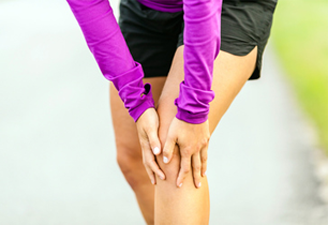What they Never Taught You in School about Aging

Aging is a biological process that brings certain physical, psychological and social changes over time. The exact reasons for this aging process is not known, but scientists are trying to discover the secrets to immortality. Until they succeed though, we are destined to get older and meet a certain death. In fact, aging is the main reason why living organisms, except those who are potentially immortal, die on this planet. The aging process in human beings has been stigmatized due to its health implications and the burden to provide social care to its senior citizens.
Numerous medical conditions create complications during the aging process such as loss of fertility, strength, stamina, dexterity, hearing or vision and cognitive impairment. Aging also creates health issues like osteoarthritis, cerebrovascular disease and neurodegenerative diseases such as Dementia, Alzheimer’s and Parkinson’s disease. Healthy aging is facilitated by living a lifestyle that can help you meet your ultimate destiny with the intent of not developing these complications in the aging process. Scientific studies and clinical trials have confirmed that a healthy, balanced diet and exercise can not only extend your lifespan, but play a crucial role in healthy aging.
As a person gets older, adopting a healthy diet inclusive of plenty of fresh fruits and vegetables, whole grains and quality proteins, helps one feel vibrant and healthy inside and out. Healthy diets promote higher energy levels, faster recuperation after an illness and a keen mental awareness. Obesity can cause the onset of diabetes, cardiovascular problems and other health issues and eating the correct foods helps control weight gain. Minerals and vitamins that are required by the body for healthy living can be obtained from a balanced, well-rounded diet.
According to some cardiac rehabilitation and exercise professionals, physical activity and exercise is one of the best antidotes against the aging process. A proper fitness routine and keeping physically active as a person gets older, will decrease the chances of suffering from cardiovascular and cerebrovascular problems, osteoporosis, neurodegenerative and other diseases associated with aging. In fact, remaining agile and staying mentally and physically active, play a vital role in helping a person feel young and stay young.
A lot of elderly people are hesitant to exercise for fear of incurring injuries. Living a sedentary life runs a greater risk than exercising, as the body ages far quicker and is more prone to diseases. Although it is advisable to consult with a healthcare provider prior to starting an exercise routine – especially if there are pre-existing health conditions – exercise is encouraged for all age groups with different physical and durability requirements. There is a large variety of physical exercises that an individual can choose from to suit a person’s age and physical condition. Exercising can be divided into three categories: aerobics which is excellent for circulatory and cardiovascular workouts, strength training builds strong bones and muscles and stretching exercises are beneficial for flexibility and balance.
According to experts at the Center for Physical Activity and Aging in Kansas, low to moderate levels of physical activity and aerobic exercises help promote healthy aging by minimizing risk factors such as high blood pressure, high cholesterol, sugar fluctuations, insomnia, and loss of cognition or memory. By beginning a daily routine of only five minutes of brisk walking, swimming, cycling or other low impact activity that escalates the heart rate, a person can gradually build up the stamina to exercise for about 30 minutes a day.
Strength training doesn’t make a person into a prospective contender in a body-building championship. It is extremely beneficial as it increases bone density, prevents muscle loss, reduces blood sugar levels, increases blood flow and improves balance co-ordination. Increased coordination decreases the risk of falling and enables an older person to perform daily tasks more easily, such as carrying parcels and lifting grandchildren, and thereby enhances the ability to be more self sufficient. Using two pound hand-held weights, like water bottles, and performing 8 – 10 exercises with 10 – 15 repetitions three days a week, can improve muscle tone and strengthen bones. Resistance bands can also be added to stimulate a person’s muscles, and Yoga or tai chi exercises can be incorporated three times a week to improve flexibility.
The National Institute on Aging is the premier institute for researching aging and the health and well-being of elderly people. The Institute is exploring and trying to understand the aging process, the diseases and conditions related to it and how to extend the healthy, active years of a person’s life. It has been proven that moderate physical activity and exercises are crucial for maintaining fitness, independence and overall health as one ages. The quality of life is improved by minimizing and preventing the risk factors that cause poor health and disability among senior citizens. In fact, moderate levels of physical activity and exercises are the best prescription for healthy and graceful aging.